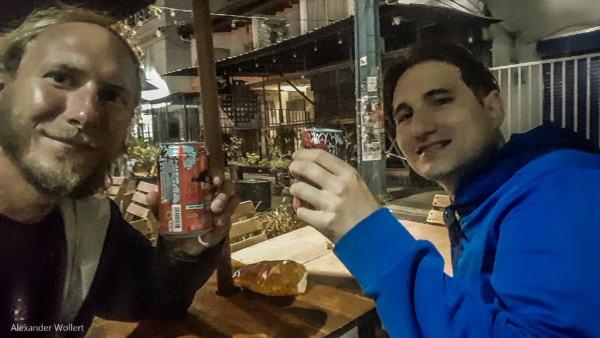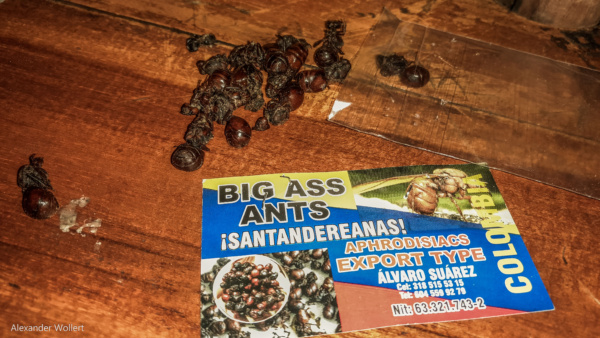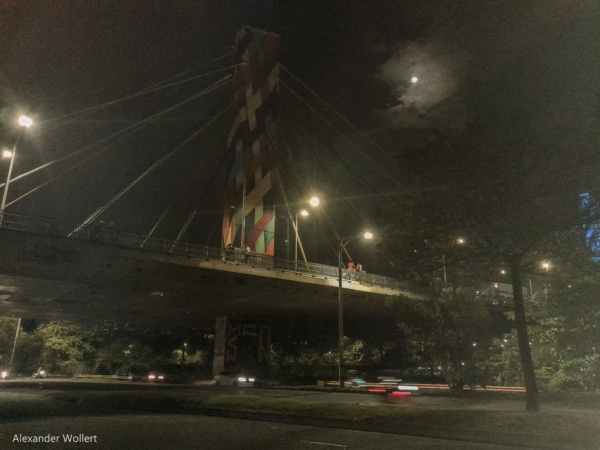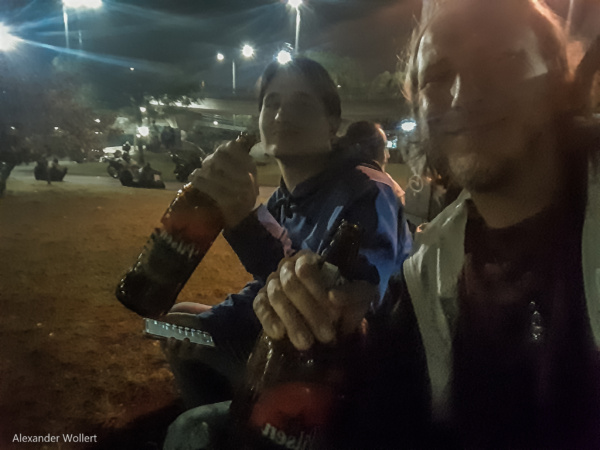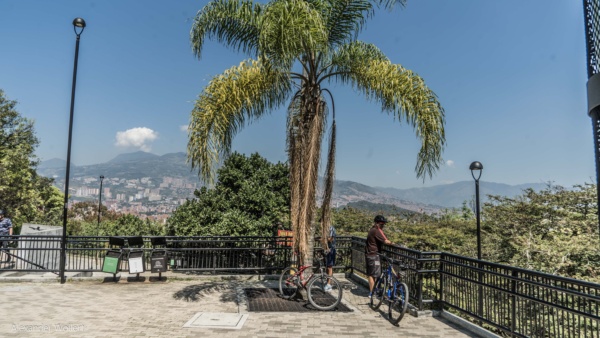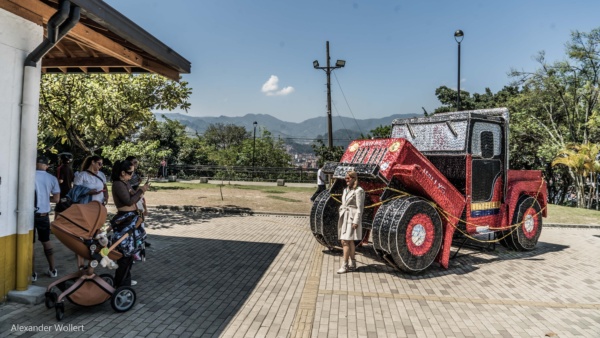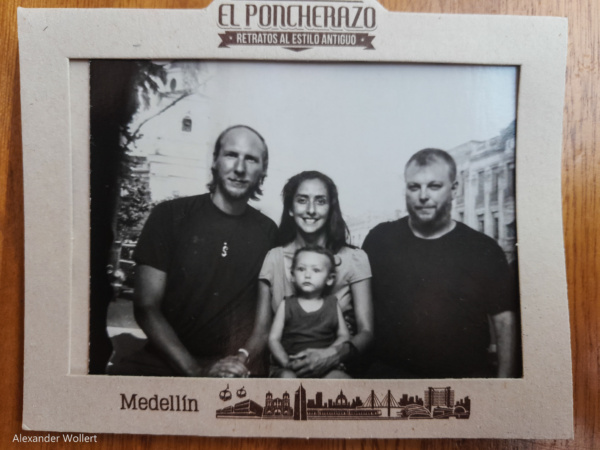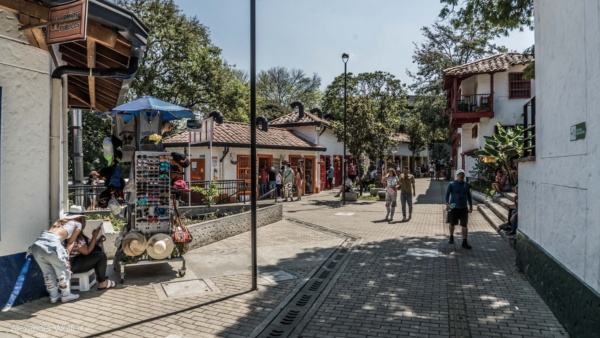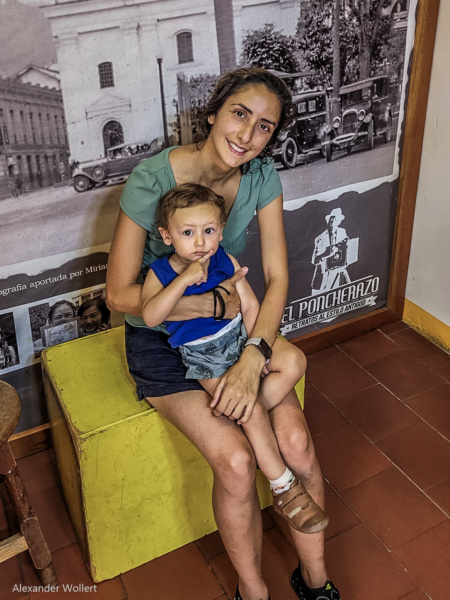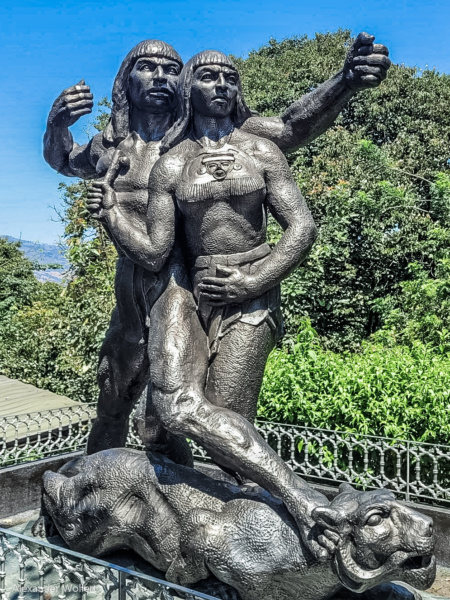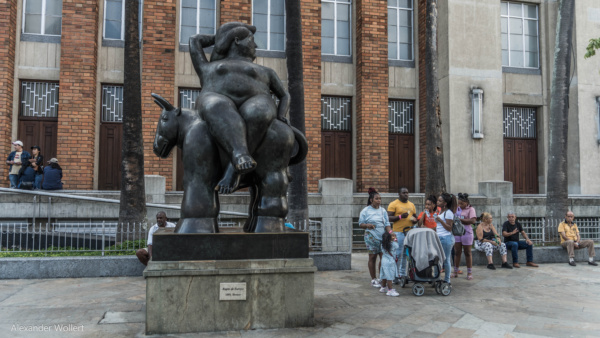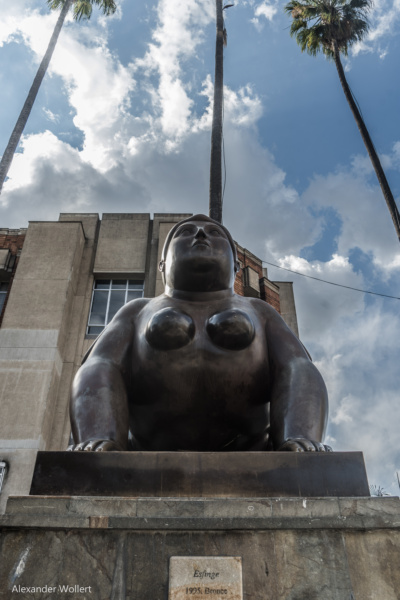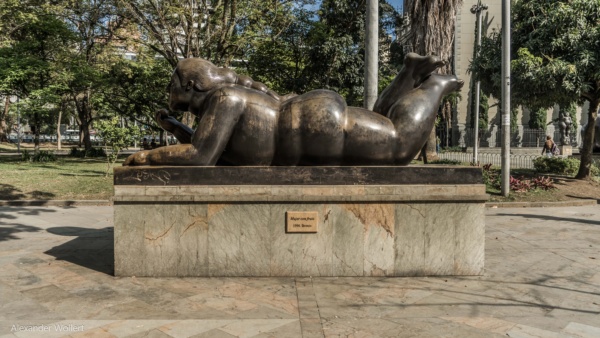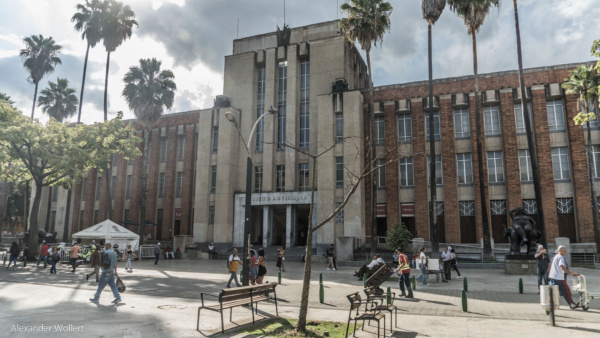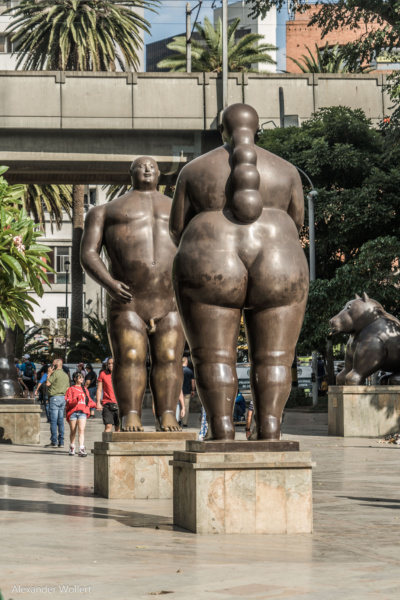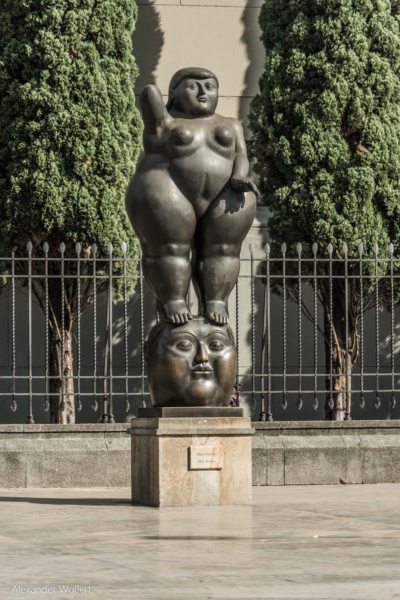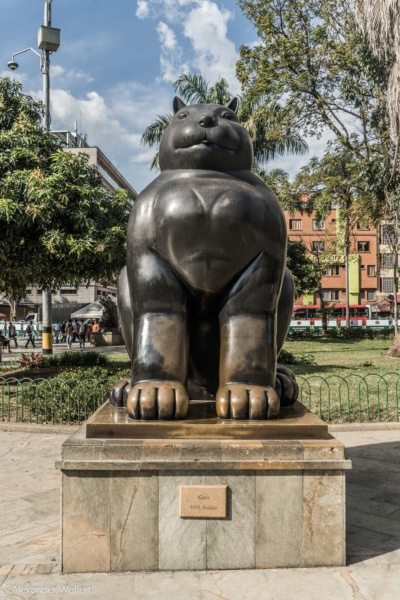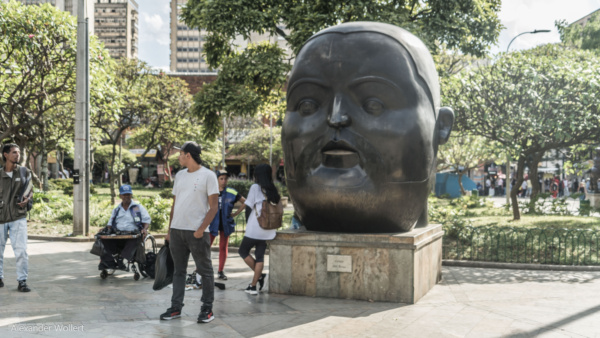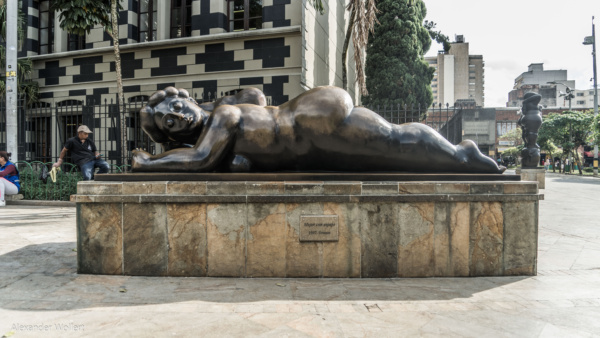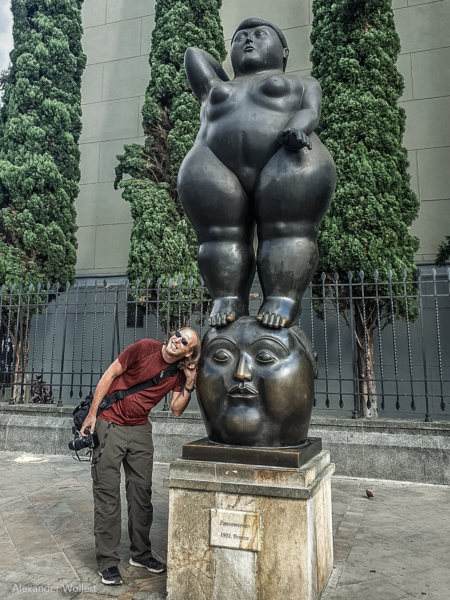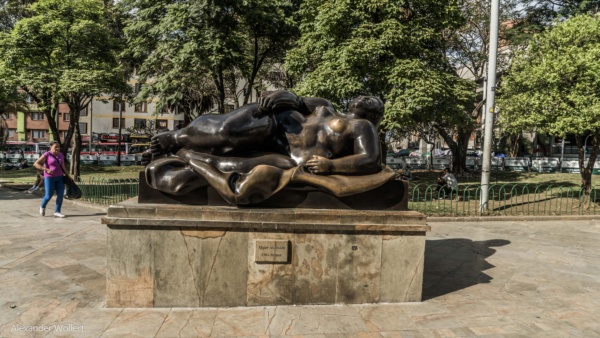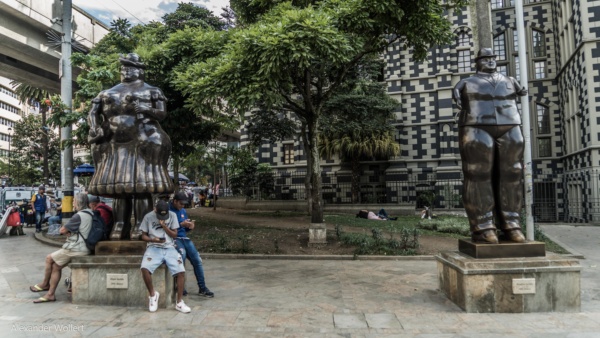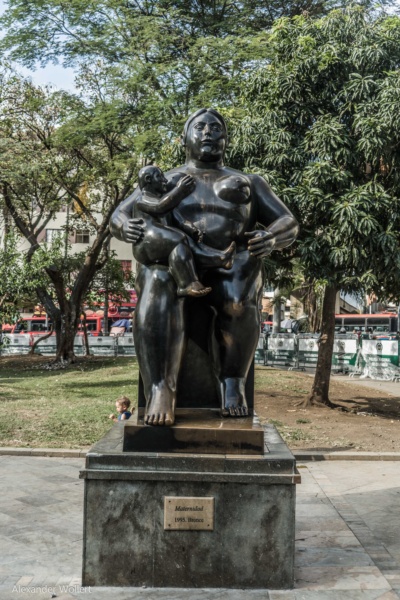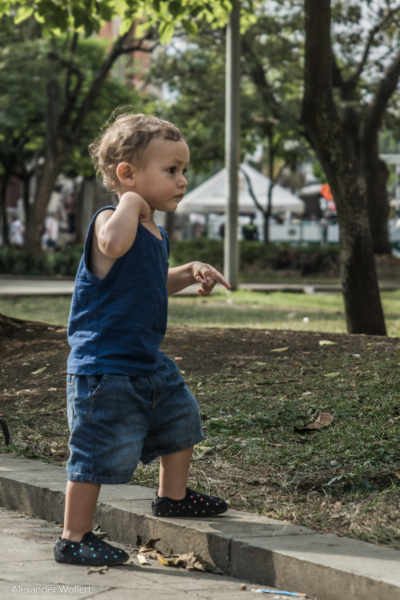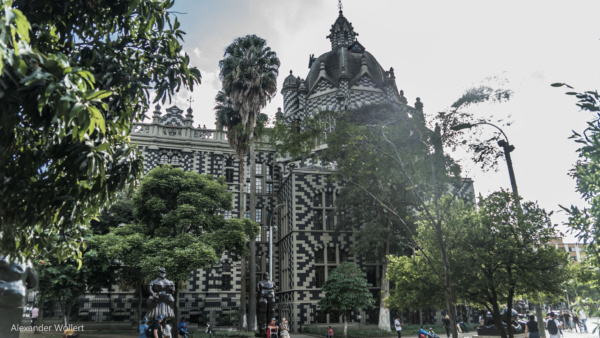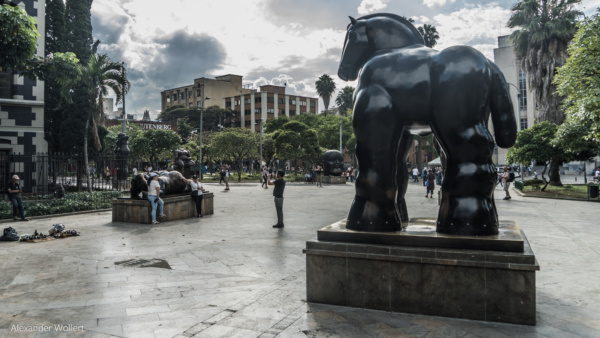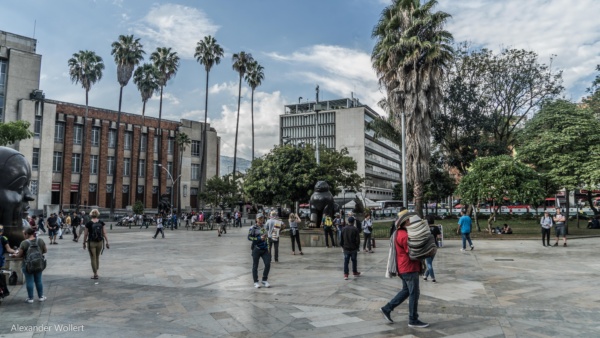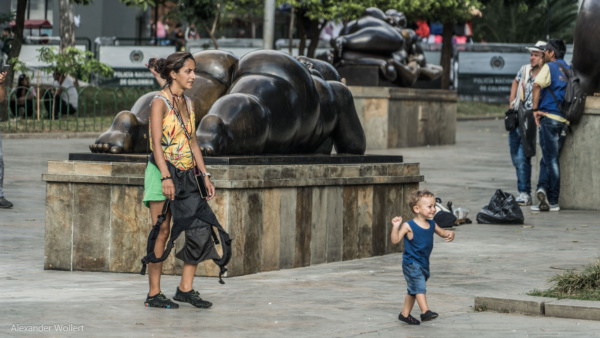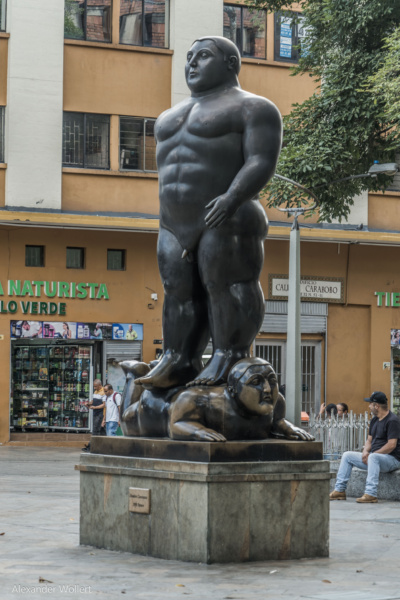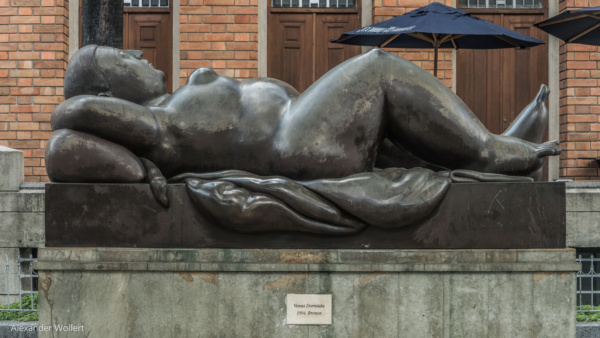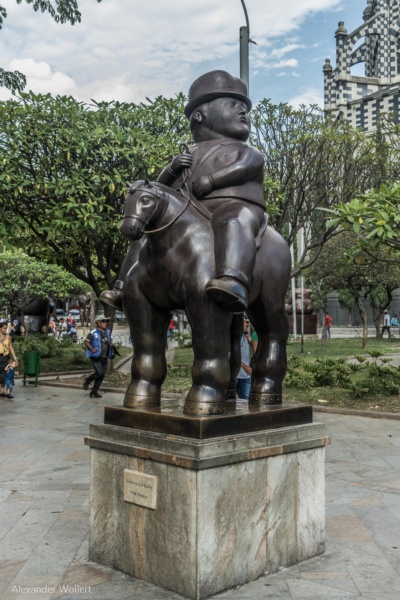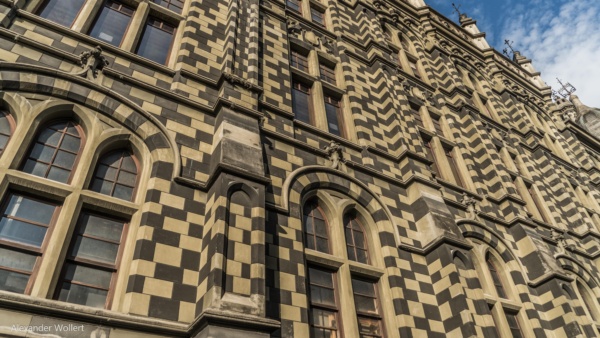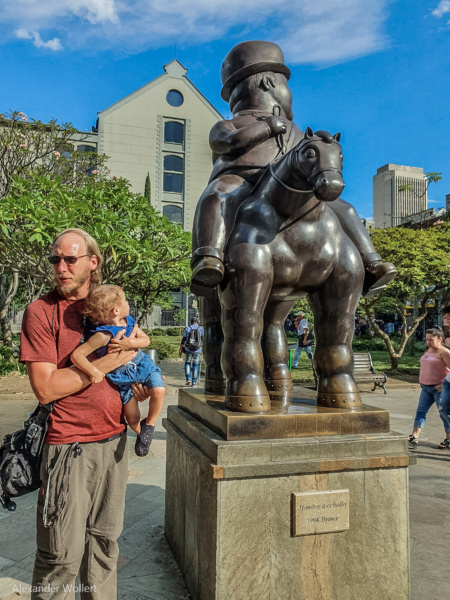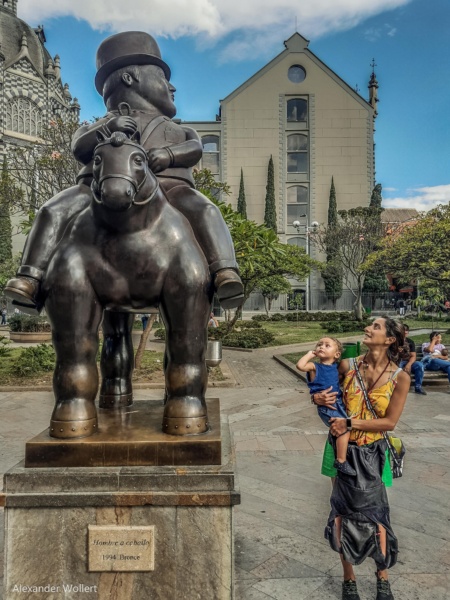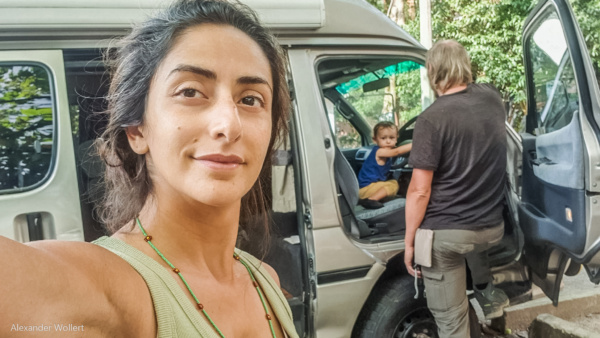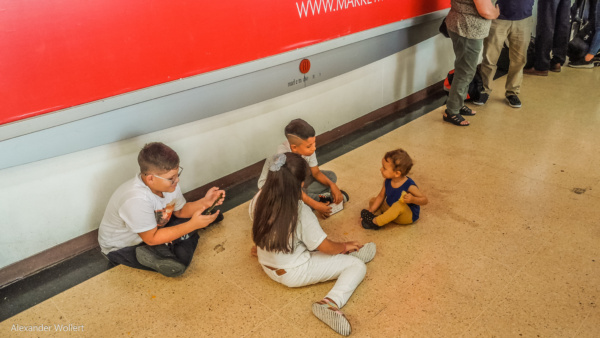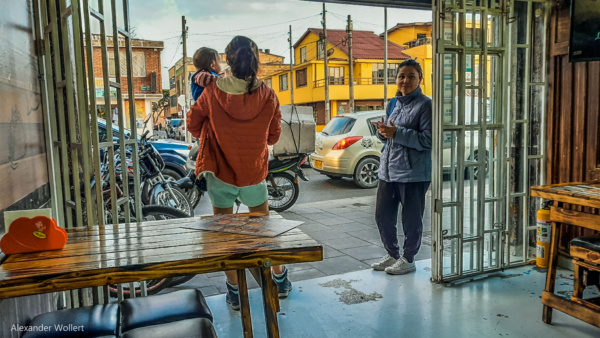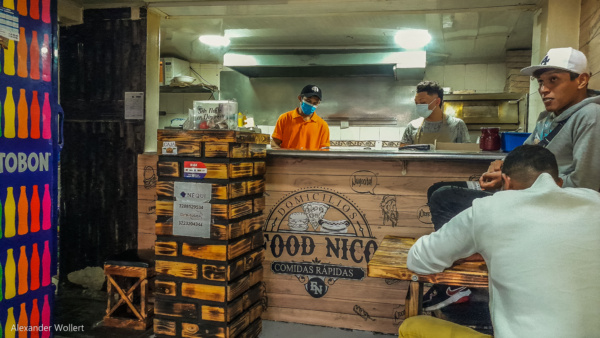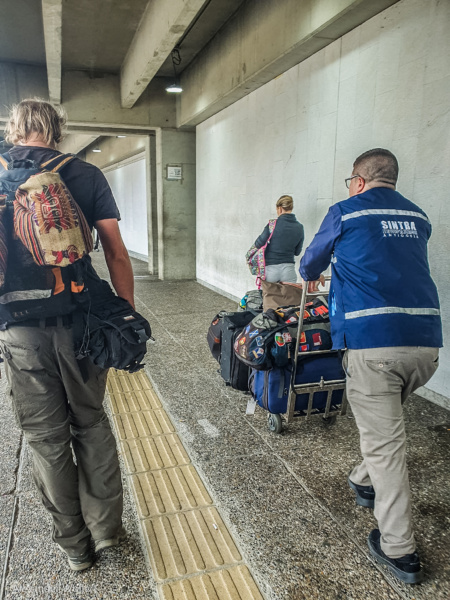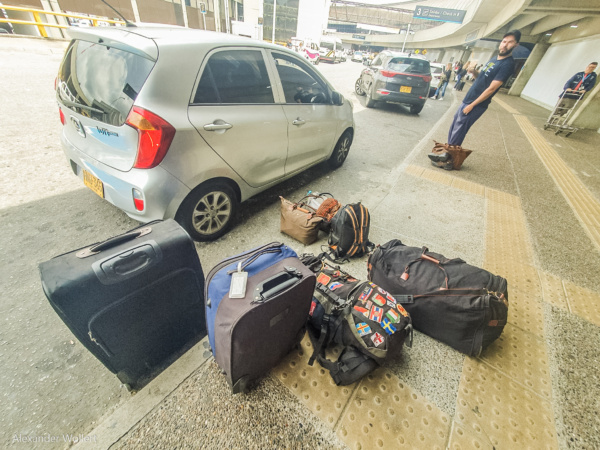Diary Entry
Traffic in the city of Medellín is not as bad as I feared when we came back to civilization from the Cauca region. I just have to be careful not to accidentally rivet one of the countless motorcyclists around me.
I found a commercial, secured parking lot not far from Olya Herrera National Airport. We park the car there and pack our things. We stay in Medellín for just one day, then we fly in a small propeller plane from the local airport of Medellín to the Pacific coast of Bahía Solano. We cross the area of Utria, a huge jungle without roads, but with many rivers and isolated villages of the indigenous Embara, one of which we will visit.
The place is located on the Pacific coast of Colombia and no road leads there, because the vast jungle of Utria lies in between.
We spend two nights in an accommodation near the national airport of Medellín. There we get to know Larry and Kiara, with whom Uwe and I drink a few beers and engage in Colombian-Teutonic cultural exchange. After Uwe’s departure, I meet Larry again in the evening in town, we drink a few beers, nibble dried giant ants and see some of Larry’s favorite places.
The best way to get to know a place is to get to know its people.
On our return, we finally visit Medellín, which we have neglected so contemptuously up to now. Medellín is said to be “the city of eternal spring” and the weather is actually very pleasant.
In the Parque Cerro Nutibara Pueblito Paisa there is a replica of a prototypical Colombian village. Spanish colonial style and brightly colored. Pueblito Paisa is its own traditional village within the city, perched on a hilltop in the Belén district. Conceived as a reconstruction of a typical village of the Paisa region, it offers us an insight into the culture and traditions of the region.
The village is very well preserved in its architecture and facilities and offers a wide range of activities including handicrafts, local cuisine and cultural events. In the heart of the village is a small church built in the typical colonial style. The view from the hill gives us a great panoramic view of the city.
We can even take a photo like it was 40 years ago… wait, that’s what they used to take pictures of here in the 1980s? The equipment is more reminiscent of the 19th century. We take a nice photo with Uwe and Leon.
It’s nice to be able to preserve culture and tradition in this way…but it feels wrong, like Disneyland
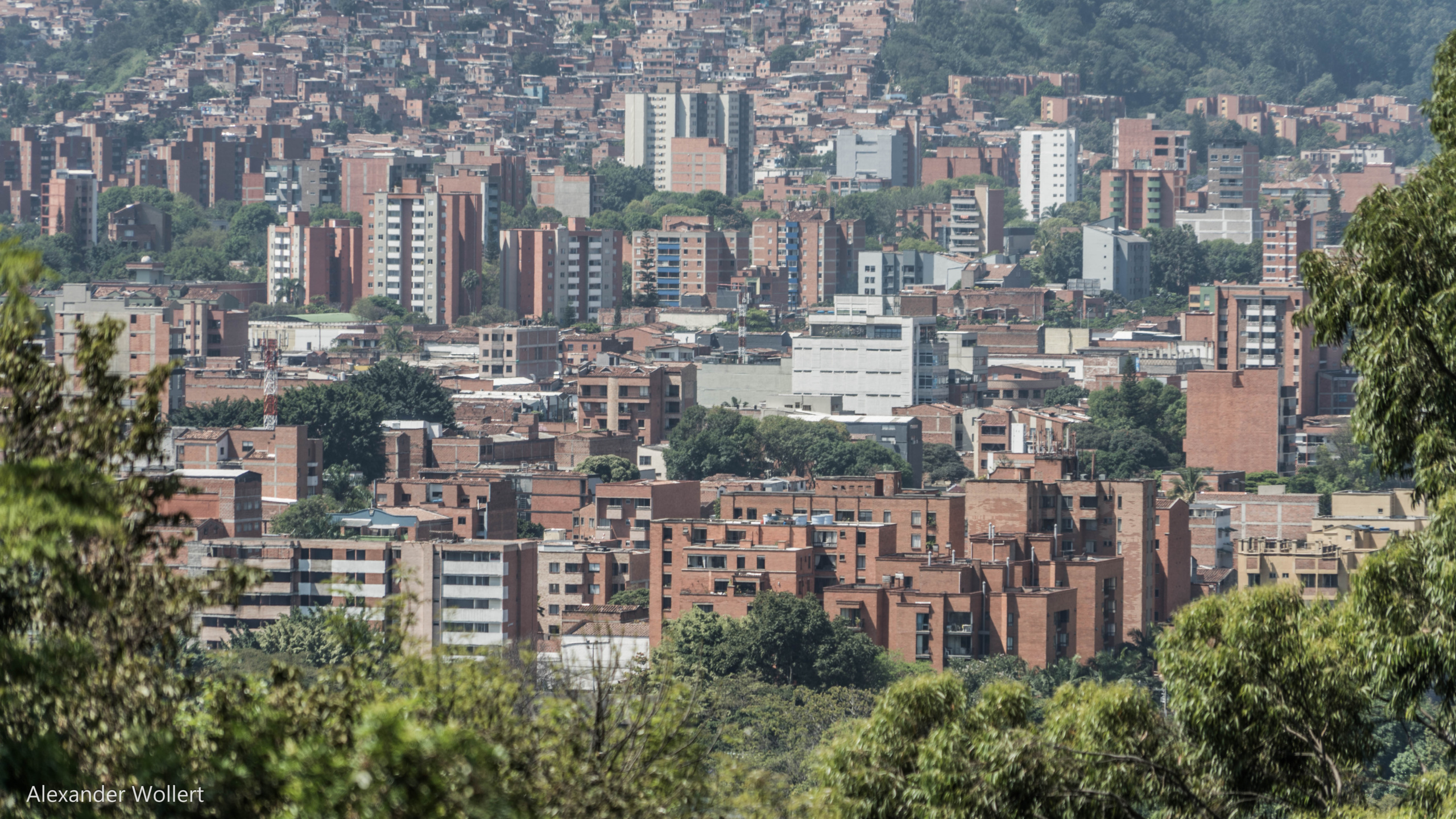
At the Plaza de los Gordos there are very thick bronze sculptures by Fernando Botero. Between the Museo de Antioquia and the Palacio de las Culturas are a huge number of round bronzes in the form of naked fat women, men and animals. The Plaza de los Gordos is a historic square located in the heart of the La Candelaria district.
The square is known for its famous “Gordos” – statues erected in 2005, which serve as a tribute to the sumptuous Colombian cuisine and the people who enjoy it. The statue depicts three overweight men rubbing their bellies, smiling and happy.
Diese Statuen sind so lustig. Endlich Humor statt Ruhm in städtischen Gedenkstätten!
Although or precisely because there are many tourists here, the square is cordoned off by the police and we have to go through a check before we are allowed to enter the square. Larry tells us the neighborhood isn’t safe. It’s all the more exciting when we leave the place that suddenly seems so safe through the checkpoint and dive into the tangle of people with Larry to see a large tower and walk to the train station.
I chained all my valuables to my clothes and we hold Leon and our belongings with both hands. In this respect we are lucky in South America – apart from an attempted theft in Quito and the corrupt police officers in Paraguay, we have not fallen victim to any crime.
It’s not safe here. Pickpockers and muggers are waiting for their chance.

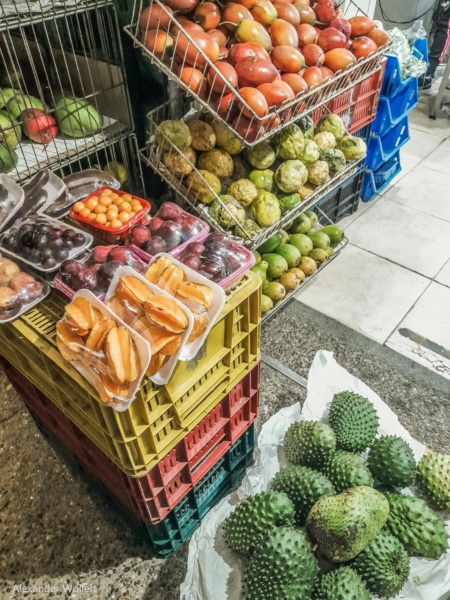
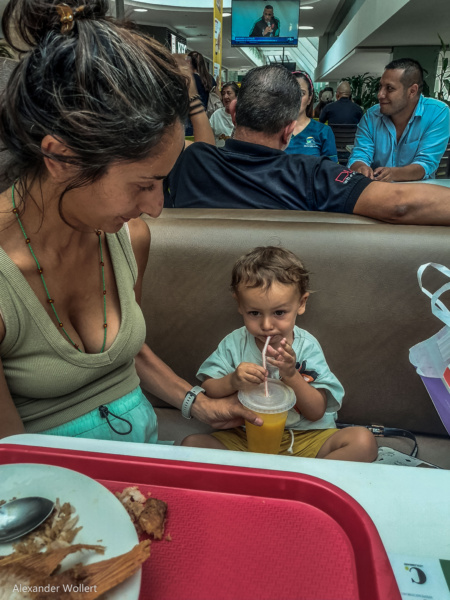
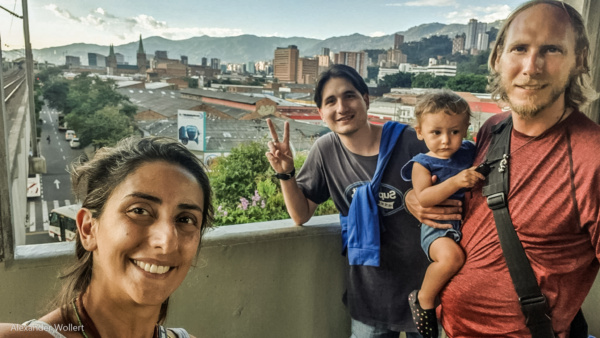
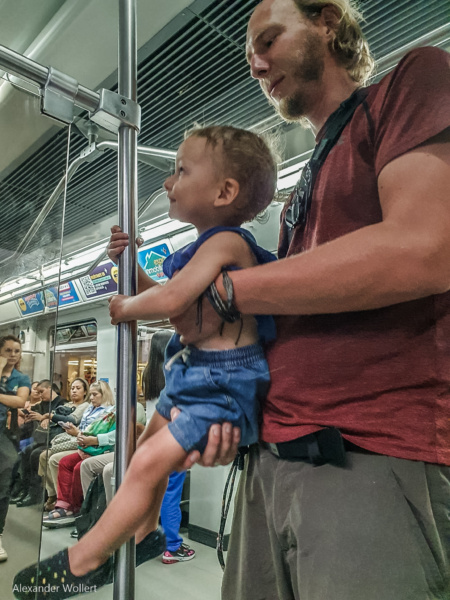
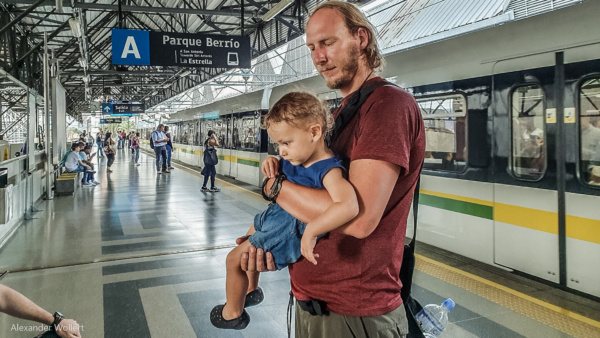
With Larry we visit other parts of the city. It’s surprisingly modern and clean. Especially compared to other South American cities, but also in relation to the history of Medellín. One cannot talk about Medellín’s past without mentioning Pablo Escobar and the rule of his drug cartel.
The city was notorious for drug trafficking and violence in the 1980s and 1990s, spearheaded by criminal organizations such as the Medellín Cartel. The most notorious drug lord of the time was Pablo Escobar, who was considered the ringleader of the cartel and known for his atrocities and corruption.
The city was shaped by the effects of drug trafficking, including high rates of violence and homicide, as well as social inequality and poverty. However, in recent years, Medellín has changed a lot and has become a vibrant and cultural city known for its innovative urban planning, arts and culture scene, and beautiful parks and squares. Still, Escobar remains an integral part of the city’s history, and his crimes and their impact on Medellín are still felt today.
Pablo Escobar is still present everywhere. At least in the head of the people.
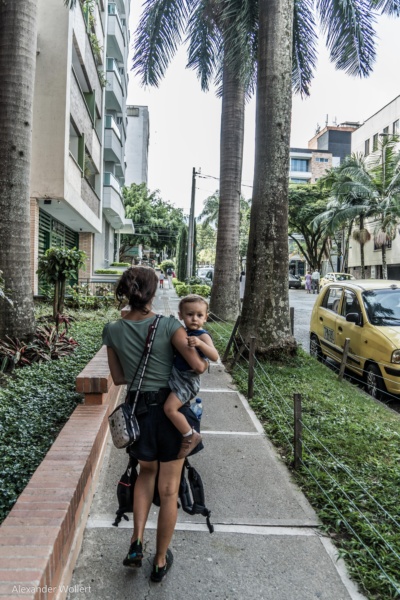
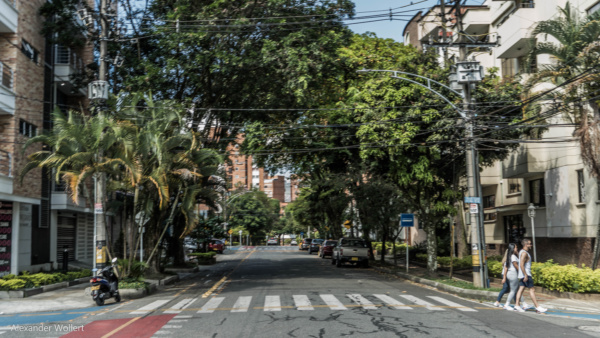
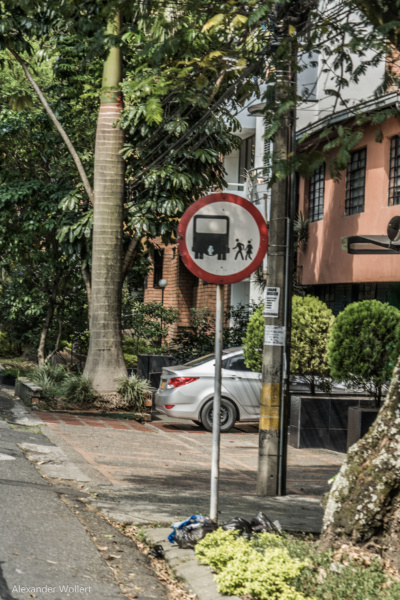
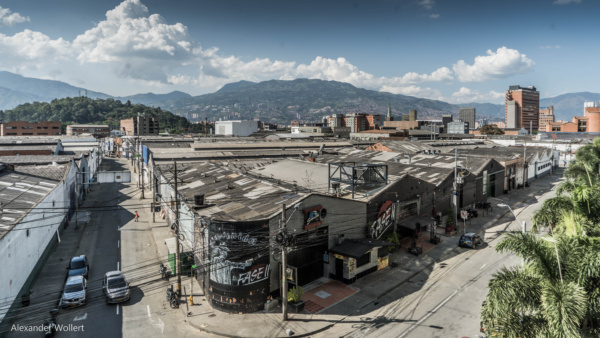
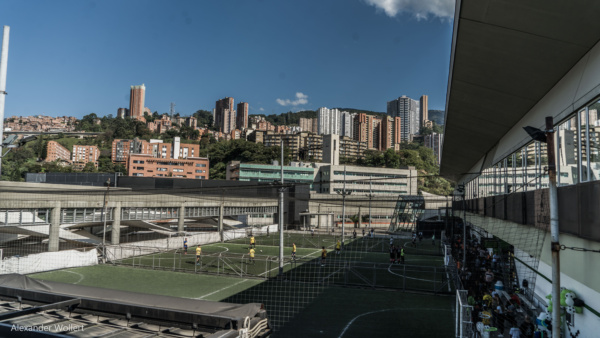


Pablo Escobar was not only a criminal drug lord but also a politician who managed to hold political office in Colombia. He used his money to build public buildings and infrastructure in Medellín, presenting himself as a benefactor. However, his presence also had dire consequences for the city. The city suffered from high crime rates and violence caused by the drug cartels. There have been numerous murders and attacks that have killed innocent people. Escobar himself had also left a trail of blood in the city and had numerous competitors, police officers and political opponents murdered. So his influence on Medellín was questionable and although he invested a lot of money in the city, the population suffered from the violence and instability that accompanied his presence.
Today, the city is working hard to overcome its past and create a brighter future, but the effects of Escobar’s drug dealing and violence are still being felt.
The district of Communa 13, which became notorious as the scene of countless crimes in the drug wars surrounding Pablo Escobar, was particularly hard hit. Today it is a place of artists who colored the place colorfully and tourists who are led by the guides through the place’s murky past. We spend a particularly nice day there.
Medellín is working hard to overcome its past.


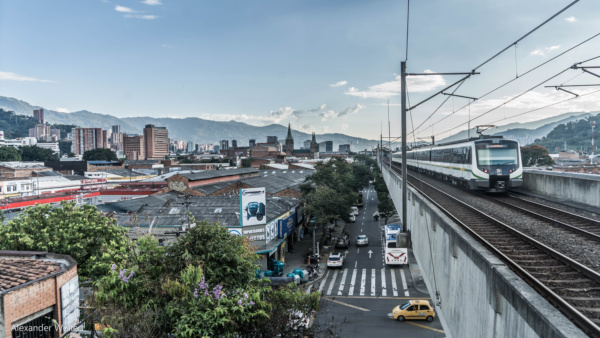

We make excursions out of town!!!
El Piedra del Peñol
In addition to the city itself, we visit two other places in the vicinity. El Peñol is a famous rock that juts out of the earth next to a seascape. A zigzag staircase was built through a gap in the back of the rock, which just looks insane.
Guatapé
Not far from El Peñol is the small town of Guatapé. With its colorful houses and colonial architecture, it corresponds to the visual clichés of Colombia.
Esteban arrives in Medellín and takes over the car from us to take it back to Paraguay and look after it there until a new buyer is found.
It was a good time in South America, but it feels very incomplete. We could not visit such places on the way and the stay in Colombia was only short thanks to the long forced time in Quito. The Caribbean, the Pampas, Patagonia and the great Brazil are yet to be explored.
Our time in South America is up. I am sad.
For us, after a short stop in Bogotá, we go to Turkey. And as always, when we want to go somewhere from further away, then an unforeseen catastrophe arrives. In 2019 my trip around the world was thwarted by Corona. In 2022 we start our planned trip to South America with Leon shortly after Russia’s attack on Ukraine. After all, only after our stay in the Andean republics did violent clashes break out in Bolivia and Peru. At the end of our maternity leave we want to meet Sara’s family in Iran, but there is a revolution there and the danger of imprisonment for foreigners and exiles.
It is not easy to get a visa for another country when coming from Iran. It’s easy to do in Turkey, so we just want to meet Sara’s family in Antalya. But on the border with Syria there are the largest earthquakes in the country’s history with tens of thousands of victims. The world has seemed to be a place of consistency and slow progress towards modern technologies and addressing the management of the climate crisis in recent years.

